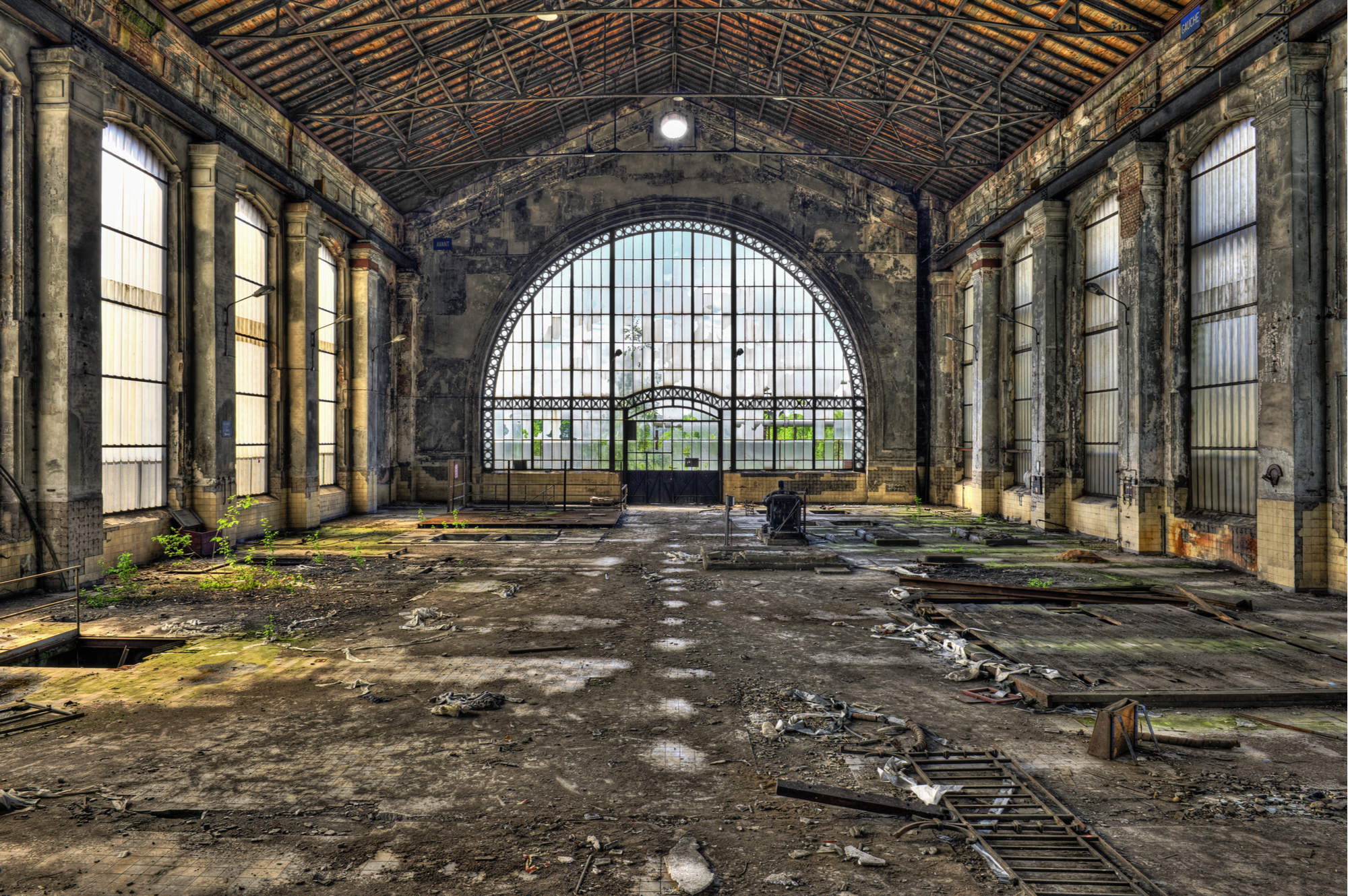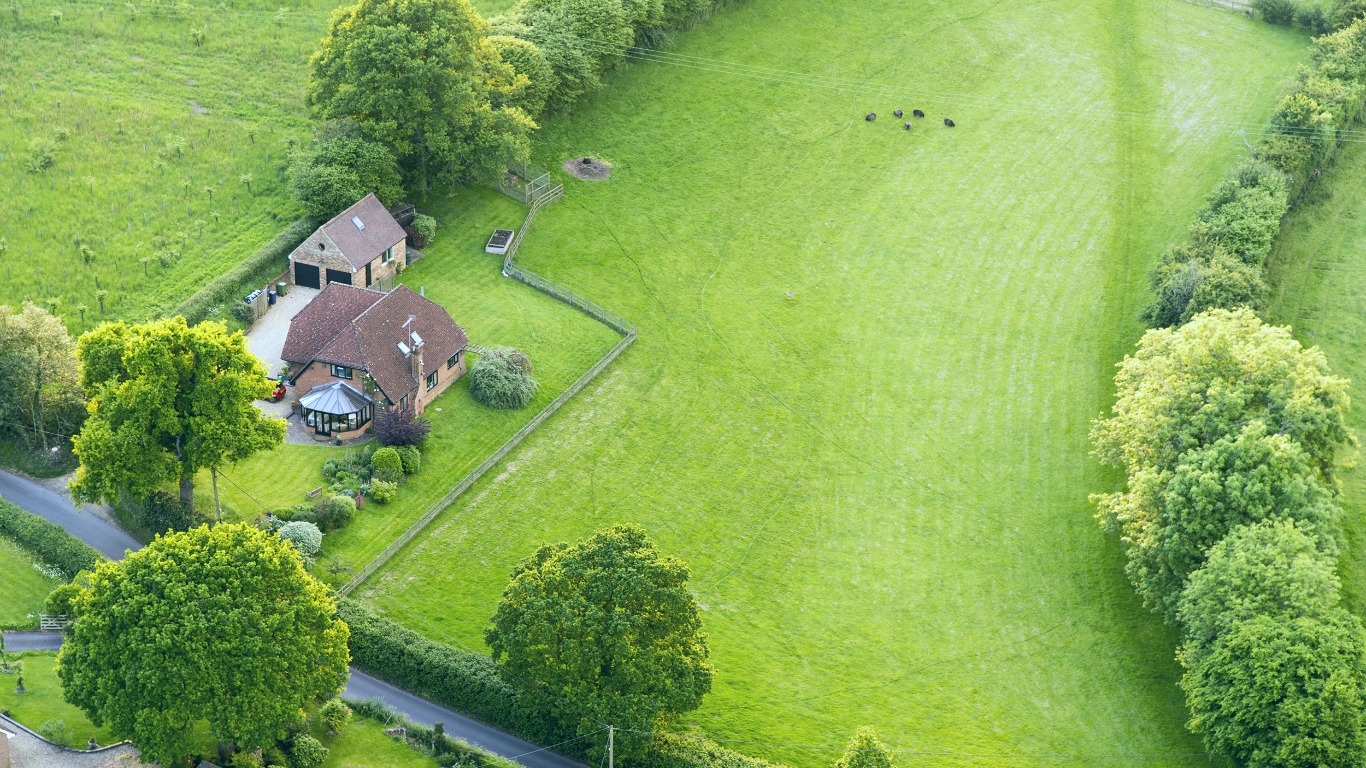How to find the perfect self build plot
The hunt for land that ticks all your boxes can take months or even years. But with a little time, energy and savvy searching, the journey from page to plot doesn’t have to be too arduous. Here’s where to begin.
Buying land to build on
If you have a detailed image of your dream home in your head, scrap it. The starting point for your design needs to be your site’s shape and terrain. Be prepared to compromise, revise and edit your ideas to fit the land available within your desired location and budget.
So how much land does your dream home require? Typically, a four-bedroom home can be built on a tenth of an acre, but if you want plenty of outdoor space you should aim for a third or even half an acre.
When it comes to price tags, the cost of land is largely dependent on an area’s house prices – you could pay anything between a quarter and two-thirds of the market value of your finished home.
Sadly, you’re unlikely to just stumble across your ideal site. Research is key, and the more avenues you pursue, the more likely you are to find the perfect plot.
Right to Build
Introduced in 2016, Right to Build legislation places a legal duty on local councils in England to make plots available for people wishing to build their own homes.
The first port of call for aspiring self builders, you can register an interest with your local authority through the Right to Build Portal. If you’re interested in multiple locations, you’re free to sign up to more than one register.
Local councils differ in their approach: some will contact you directly if land becomes available but more often than not you'll have to search through it the usual channels and pay the going rate for it.
Councils then have three years from your registration date to make land available and fulfil local demand. This doesn’t mean that the authority will offer you the exact type of plot you want, or offer you anything at all directly, but they do need to ensure that enough sites with planning permission are being brought onto the market.
If you’re expecting a plot matchmaking service, think again. Nevertheless, it’s important to sign-up because it places pressure on councils to make more self build land readily available for aspiring home builders.
Find land online: land databases and estate agents
These days you can scour the UK’s land offerings from the leisure of your sofa. Plotsearch, Plotfinder and Plotbrowser are just a few of the handy online search tools at your disposal. When your hunt is just beginning, these websites can offer a helpful indication of what you can expect to pay for a plot in your desired location.
It’s always worth keeping an eye on estate agent websites like Rightmove and Zoopla too. While plots on these kinds of sites tend to move like hot cakes, you could get lucky and strike gold. If you want to cover all bases, phone around your local estate agents and let them know what you’re looking for. Get ahead of any window-shoppers and ask them to contact you as soon as anything suitable comes across their desk.
Land and property auctions
A speedy way to secure a plot, it’s possible to bag a real bargain at auction and you’re more likely to find unusual lots that wouldn’t normally have crossed your radar.
Once you’ve seen the auction catalogue, which is usually published around a month in advance, take the time to visit any potential plots. Research the land’s planning history on the local council website and if there’s any cause for concern, you can arrange a ground survey before the auction.
Make sure you’ve sought the advice of a solicitor well in advance and remember to register your intent to bid with the auction house. Note that finance needs to be in place before the auction.
Whether you attend the auction yourself or participate online or over the phone, have a price limit in your head and stick to it. It’s all too easy to get carried away, but once the hammer falls, it’s final.
You can see what’s on offer in auction houses across the UK at a glance on the UK Auction List website.
Brownfield land registers
A little-known land route, brownfield plots can be a great opportunity for self builders. Referring to previously-developed sites, the National Planning Framework defines brownfield land as that which “is or was occupied by a permanent structure”. This excludes agricultural or forestry buildings, private gardens, allotment, recreation grounds and landfill sites or those used for mineral extraction.
You'll buy the land 'as seen' and the demolition of any structures or clean-up operations needed to prepare the site for your build is all down to you, so do factor that in to your budget.
So what’s the benefit for self builders? Brownfield land can crop up in locations where space is scarce, or planning permission would otherwise be difficult to secure. And because these sites don’t resemble the archetypal green field plot, there’s often less competition too.
 An abandoned coal mine hall on brownfield land. Credit: Ppictures / Shutterstock
An abandoned coal mine hall on brownfield land. Credit: Ppictures / Shutterstock
If finding one of these sites sounds like a headache, fear not. Thanks to new legislation introduced in 2017, every council in England now has a publicly available register of brownfield land suitable for housing in their area. Helpfully, these plots are then assessed, with those granted planning permission in principle listed in part 2 of the register. Contact your local council to find out how you can view their register.
Do be aware that if a site was previously industrial, home to an old fuel station or workshop perhaps, you’ll need to arrange a ground survey as the soil could be contaminated.
Building on a garden plot
The answer to your plot search might be closer to home than you think, just outside the back door even. If you’re lucky enough to have a sizeable garden, it could be the ideal spot to realise your dream dwelling and, of course, it’s free!
There are plenty of other benefits to this route too – you’ll have somewhere to live during the project, it’s easy to keep an eye on the build and you can often draw on existing utility connections.
Your first port of call should be to check the Land Registry to see if there’s a covenant attached to your house preventing the development of the garden.
If you’re in the clear, you’ll still need to apply for planning permission. Large garden sites, with designs that embrace the surrounding landscape and architecture, tend to be looked on more favourably. Make sure your proposed self build doesn’t overlook any neighbouring properties and ensure safe access routes are planned out, too.
 This contemporary home was built on a garden plot in Greenwich. Credit: Facit Homes
This contemporary home was built on a garden plot in Greenwich. Credit: Facit Homes
Terry and Mickey transformed their leafy back garden into the home of their dreams (pictured above) with help from prefab company Facit Homes. Located next to a park, the exterior of the property is clad in dark-stained timber to reduce the visual impact on the surrounding area.
Knock down and rebuild
If your search for a vacant plot keeps coming up short, you could consider purchasing an existing property to knock down and construct your ideal home in its place.
Michael Holmes, property expert for The Homebuilding & Renovating Show, says: “A large proportion of self build plots were previously occupied by housing that did not make optimum use of the valuable land. Planning policy usually has a presumption in favour of replacement with one or more new units providing the existing housing is not listed or in a conservation area.”
Demolition can cost from £8,000 - £12,000 for a single property, but you can reclaim VAT on almost all the rebuild materials you use to offset this expense, provided you don’t use any part of the existing dwelling.
Make sure you disconnect and cap off services such as water and sewage connections, electricity, gas and broadband before demolition begins. It’s best to do this well in advance as providers can take a while to enact this.
Serviced plots
One way to fast-track the self build process is to opt for a serviced plot. Pretty much what it sounds like, this is a site that comes ready to build on, with water, gas, electricity, sewage, access and broadband already in place. Bonus – they’ll most likely come with some type of planning permission too.
There are around 2000 serviced plots available across Britain, but one of the biggest sites is the Graven Hill self build community in Bicester. With almost 300 serviced plots on offer, they’re looking to increase this number to as much as 1,900 in the not-so-distant future.
 A render of the new self build site in Bicester. Credit: Graven Hill
A render of the new self build site in Bicester. Credit: Graven Hill
If you want to minimise risk, this is certainly the way to go, but you’ll have to be prepared to pay for the privilege. Unsurprisingly, serviced plots tend to be more expensive than taking on an unprepared site, but for many, the price tag is a worthwhile trade for a less stressful build.
Building in a designated area
While many of us would love to lay down roots in the rolling countryside, development is usually restricted in protected spaces such as conservation areas, areas of outstanding natural beauty (AONB) and national parks.
If you spot the perfect plot in one of these zones, it’s important to be realistic – building in a designated area will involve a whole lot of hoop-jumping, but if you’re prepared to compromise and put in the energy, it can happen.
Ben Lee, director of VITA Architecture says: “The best place to start to understand the legislation and policies that affect the plot is the Planning Portal.
“Have a check on the neighbouring sites to understand whether any planning applications have been submitted, from there you can read planner’s reports to understand what policies should be applied to the area and what rules you can play within.”
Typically, there’ll be restrictions on the design, materials and scale of your proposed dwelling to ensure it harmonises with the local landscape. These limitations can vary depending on the planning authority, so it’s important to research the local planning policy before you purchase a plot in a protected area.
Land assessment
Appearances can be deceiving. The location and cost of a site might tick all the right boxes but does the terrain come with strings attached?
If you’re considering a sloped plot, you’ll have to be prepared to alter your design to compensate – you could opt for an upside-down layout to utilise excess space on the upper floor, for example.
 In the Sky House, living areas are situated on the first floor to make the most of the site's rural views
In the Sky House, living areas are situated on the first floor to make the most of the site's rural views
Tree preservation orders can also restrict where you can build, while land at risk of flooding may require design alterations to protect your future home – you can check if your plot is located in a flood zone on the HM Land Registry. Similarly, it’s a good idea to arrange an ecological survey, as the discovery of protected species can halt a project in its tracks.
Ben says it’s important to be thorough with your checks. “Map out your proposed project onto a simple ordinance survey plan in scale. This will help you ensure that spatially you can fit in what you’re after in principle. Your solicitor should conduct the standard survey checks on their side to highlight and minimise any relevant risks.
"If you also have concerns regarding land contamination, getting a contaminated land survey maybe worth investigating to minimise your risks and costs further down the line.”
Planning permission
As a general rule, it’s not advisable to buy a plot without planning permission, unless the purchase is ‘subject to achieving satisfactory consents’, which means you won't have to pay for the plot unless your planning permission is approved.
If you have doubts, research the plot’s planning history on your council’s website and arrange a pre-application meeting with your local planning officer too. They’ll be able to tell you what your chances are of securing planning permission and help you understand the local planning policy.
You can even apply for planning permission before purchasing if time isn’t an issue. You just need to inform the owner, leaseholders with at least a seven-year lease remaining, and any agricultural tenants.
Perseverance
Embrace as many research routes as possible and you’re bound to hit gold at some point. Don’t underestimate going old school either – scouring your location on foot could turn up some real gems.
Keep an eye out for infill plots between buildings and approach homeowners if you spot properties with sizeable gardens that could be divided and sold off as land. You never know where the right plot might crop up.
READ MORE: How to build your own house: a self build beginner's guide
Featured image: Andreea Dragomir / Shutterstock
Comments
Be the first to comment
Do you want to comment on this article? You need to be signed in for this feature
